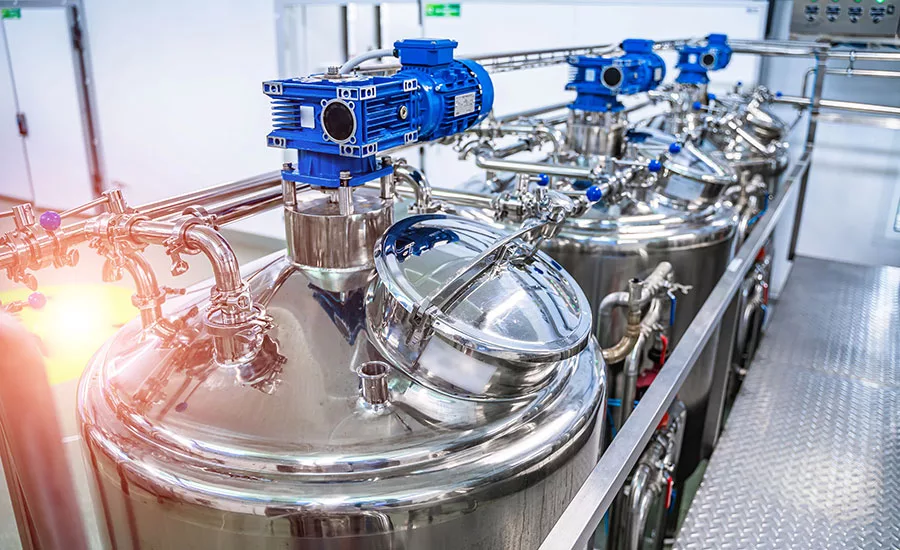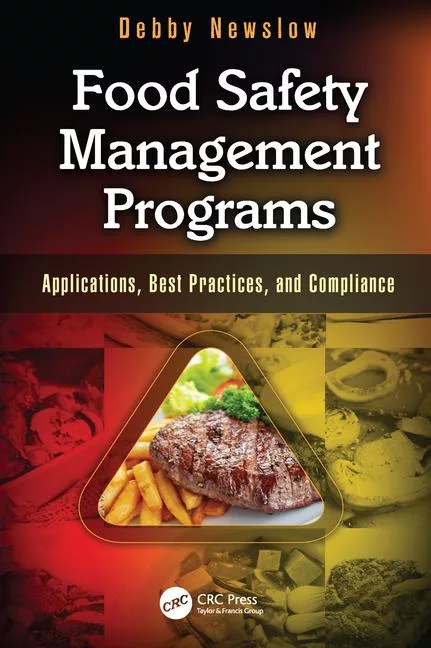Merging Food Safety and Operational Excellence
Combining the best of both food safety and operations

How do we look to the future beyond the pandemic? Now more than ever, we need to integrate food safety culture and operational excellence to become a routine practice with food and beverage manufacturers. The National Institute of Standards and Technology Manufacturing Extension Partnership National Network hosted a webinar in December 2020 that covered the following areas:
- The mechanisms by which processes are controlled and how they affect profitability
- How strong food safety culture affects your business
- The means by which cross-functional teams can build a food safety culture
- How to integrate food safety culture and advancing technology
In today’s world, the merging of food safety and operational excellence cultures is simply not optional but is an operational necessity. A food safety culture includes guidelines that, if followed, will protect consumers from receiving contaminated products by mitigating risks in all areas of manufacturing and the supply chain.
Connecting Food Safety and Operations
To understand how these cultures are interwoven and in fact are inseparable, it is important to review the underlying principles for operational excellence and why world-class companies seek to follow the principles. The Shingo Institute has identified 10 guiding principles divided into three broad categories. The first category is Cultural Enablers and includes respect for every individual and leading with humility. The second category is Continuous Improvement and includes quality at the source, improving flow and pull, seeking perfection, embracing scientific thinking, and focusing on the process. The last category is Enterprise Alignment, which includes creating value for the customer, creating a consistency of purpose, and thinking systematically.
The actions associated with food safety fall clearly into the second category. Food safety practices that are put into place can be directly tied to:
- Quality at the source – This is completing every element of the process flawlessly.
- Improving flow and pull – This means that actions taken in the name of food safety must be incorporated into the product flow and be thoroughly completed with a minimal impact on productivity. It is important to understand that food safety protocols take precedence over productivity.
- Seeking perfection – This is self-explanatory. A product made ignoring food safety protocols is not a good let alone perfect product.
- Embracing scientific thinking – Food safety protocols are established using a methodology founded in science.
- Focusing on the process – All protocols need to be part of the everyday process and followed regularly.
Effective adoption of these practices in food manufacturing can be seen in the Standard Operating Procedures (SOPs) found at https://www.bizmanualz.com/sample-iso-22000-food-safety-policy-procedure-template.
Food Safety Segments
Food safety can be characterized as mitigating public risk and creating a hygienic environment in the following categories:
Personnel hygiene
A few questions to ask: How do you instill good practices of handwashing? What is the company uniform policy? How is risk mitigated with footwear? Who reviews employees if they appear to have an illness or infection? How do you ensure that direct employees, temporary employees, visitors, and contractors are all following Good Hygiene Practices around handwashing and proper PPE prescribed at the company?
Cleaning and sanitation
A few questions to ask: Do you have a master sanitation schedule mapped out for all areas of the facility, storage, and break rooms? Have you addressed cleaning differences between food contact surfaces and non-food contact surfaces? Have you included drains? Have you decided how best to clean ceilings, floors, and walls? How does your company address hard-to-reach areas? How do you distinguish cleaning equipment and utensils? Do you have dedicated Sanitation SOPs and frequency of cleaning for each area? Do you have the same for cleaning the cleaning equipment and utensils?
Record-keeping procedures
A few questions to ask: How is this currently being filed? Electronically on a server? Cloud-based system? Physically in a filing cabinet? Is a two-step verification happening for all documents? If so, are the appropriate people being leveraged for the sign-off, that is, do they have context around the paperwork that they are signing off on and understand what to do if deviations occur? If not, why is there a gap in verification from a process perspective, and how can this be improved?
Looking for quick answers on food safety topics?
Try Ask FSM, our new smart AI search tool.
Ask FSM →
Tracking and trending data
A few questions to ask: Do you have a statistics program to leverage for tracking and trending, or will this need to be managed through Excel? Who will oversee this process? Quality? R&D? Operations? A team effort? How often will data be reviewed? Weekly? Biweekly? Monthly? Will the frequency vary based on the data that are being reviewed, such as consumer complaints versus pest control reports?
Putting Food Safety into Practice
A good example of how to characterize food safety and create a hygienic environment is the following.
Suppose you are a baking mix manufacturer. Your facility is fragmented operationally as well as for food safety. How can you improve both situations at the same time? This is where integrating food safety culture with operational excellence can really excel.
From a food safety perspective foundationally, we are concerned about hygiene, cleaning and sanitation, allergens, and traceability. From an operational excellence perspective, we are concerned about process flow, maximizing efficiency, standardization, and prioritizing safe, quality finished product to enter retail. Operations and food safety need to work hand in hand on all these areas listed to help maximize results for both departments. Take Table 1 as an example for how to brainstorm scenarios of how the two areas overlap.
Table 1: Overlap between Food Safety and Operations
| Food Safety Topic | Operations Topic | Overlap | Recommendations |
|---|---|---|---|
| Hygine | Process Flow | How do we manage traffic flow of people, products, and equipment throughout the facility? This also flows nicely into storage as well as inventory control. | Map out a visual flow diagram to ensure traffic patterns of people, products, and equipment are as hygienic as possible and not commingling allergens or different stages of food products (raw versus ready-to-eat). |
| Cleaning & Sanitation | Maximizing Efficiency | How do we position cleaning equipment versus manufacturing equipment in a facility? | Mark footprints of all equipment against traffic flow patterns to see what is operationally feasible. |
| Allergens | Prioritizing Safe, Quality Finished Product | How do we handle allergens through all stages of manufacturing: receiving, storage, product movement, processing, to finished product? | Does our plant have allergens? Check all ingredient specifications. After that step, ask what forms are our allergens in? Liquid, powder? Finished product? Do we have allergens in our vending machine? Is anyone on staff allergic to any of the Big Eight allergens? |
| Traceability | Standardization | How do we streamline data for trending and tracking efficiency? How do we decrease the time to find things in the warehouse? This improves operations efficiency and reduces risks for recalls. | Start gathering data from your warehouse management system or other program (if available) and start analyzing weak points (if any). See if there are any duplications that can be minimized. |
Regardless of the type of finished product you make, such scenarios apply to all manufacturing environments.
Food safety and operational excellence can work together to better move both areas forward for food and beverage manufacturers. Food safety culture needs a systems-based approach. As with anything in life, success needs structure.
To go one step further, how is this implemented? U.S. Food and Drug Administration Deputy Commissioner for Food Policy and Response Frank Yiannas once stated that you want to be specific and ensure consequences if your goals are not met. Why? Because if you cannot have a targeted approach with metrics and human behavior, you aren’t able to measure a true sense of progress with food safety culture.
Food safety culture and regulations are only going to be progressing in the next decade, with more scrutiny by the federal government, auditing firms, and the public, given the situation with the pandemic. It is imperative to act now if you haven’t already around the framework of food safety culture within your organization, focusing on personnel and creating or supporting behaviors that will be sustainable for years to come.
Juliana Canale is a Food Manufacturing and Regulatory Expert at the New Jersey Manufacturing Extension Program and can be reached at jcanale@njmep.org.
Jeffrey Hartman is a managing partner at Capital Manufacturing Consultants.







